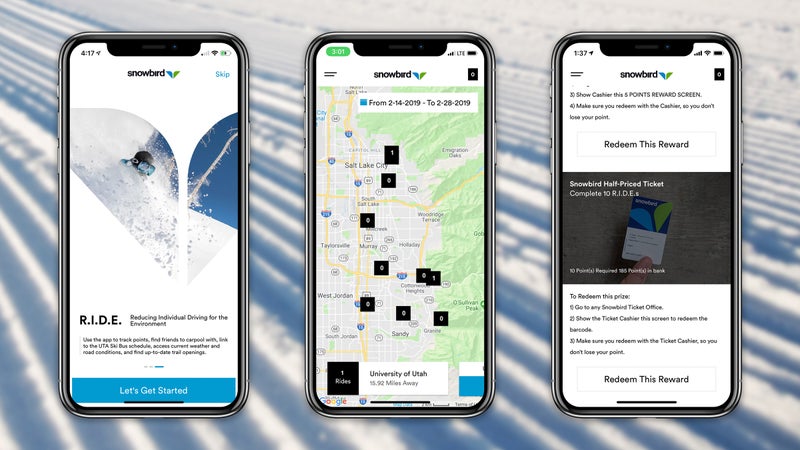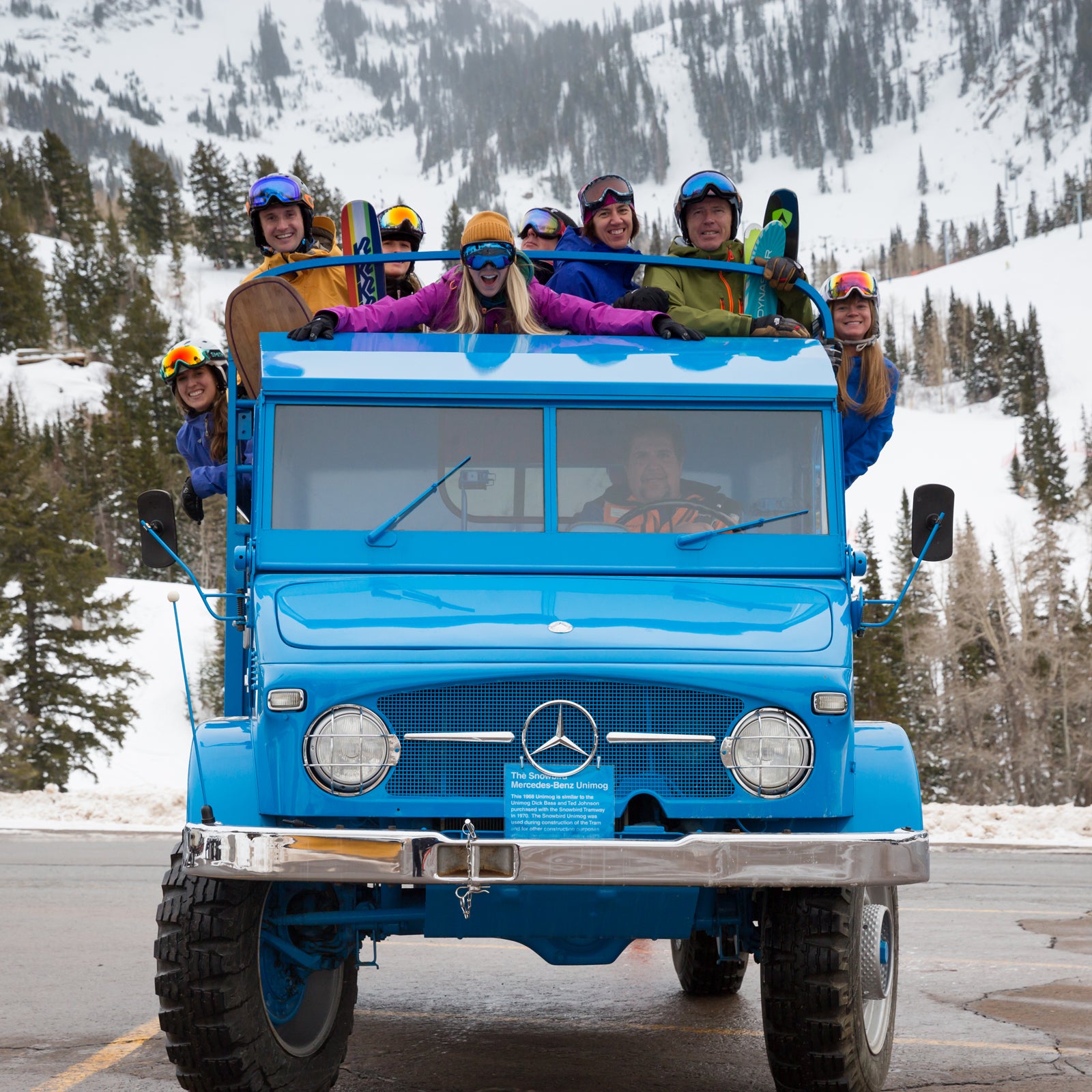Just 25 miles from downtown Salt Lake City, Snowbird offers some of the best skiing in the U.S. But because of skier-created traffic, driving the seven miles of Little Cottonwood Canyon can take up to two hours on a busy day.
With guests and employees both driving the canyon to ski at Snowbird (and neighboring Alta), the resort is aiming to reduce congestion and carbon emissions with its (Reducing Individual Driving for the Environment) program. Initially launched in the 2016–17 season, RIDE coupled with the resort’s ticketing system and encouraged people to carpool or take the bus instead of driving alone, offering rewards like VIP parking and half-price lift tickets as incentives.
According to Snowbird marketing director Dave Amirault, initially the system proved too hard to track. “It was a good start, but we realized that a lot of people that were utilizing the program wanted more, and it seemed that if we threw the right technological solution at it, more people would use it,” Amirault says.
So, Snowbird relaunched the RIDE program with a new free ride-sharing app last Thursday.
The idea of encouraging people to use public transportation or carpool when they head for the slopes is not new. Colorado has , the Tahoe area has , and Mount Hood’s Timberline Lodge Resort points skiers and riders to use , an Oregon-based carpooling program. All three connect mountaingoers online to fill empty seats in cars headed for the snow, with varying degrees of success. There are also public transport options, like the , and you can always take your chances with Craigslist.
“We don’t want to reinvent the wheel with any of this,” says Amirault. “We just wanted to make an easy mechanism to get people together and into vehicles while reducing those single-occupant cars that are coming up.”
There are currently nine pickup locations on RIDE around Salt Lake City and Sandy, including stops at the University of Utah, Westminster University, and the bus station at the mouth of Little Cottonwood Canyon. It works similarly to Uber or Lyft: fire up the app, look for rides at the nearest pickup location, get a ride up the canyon, and earn incentives points you can redeem at the resort. Or if you’re driving up, post on the app to find butts for your open seats and also earn points.
Forty-eight percent of Utah’s main wintertime air pollution comes from nonstationary sources, such as cars, planes, and trains.
If you can’t find a ride, and you have a Snowbird season pass, you can take the UTA bus up the canyon for free and still collect RIDE incentive points, the same as if you had carpooled. After your first ride, you get a set of Snowbird stickers and VIP parking right next to the lift. After five trips, you get a Hydrapak Stow collapsible water bottle, and ten rides earns a half-price fully transferable lift ticket. For locals, ten rides also earns an entry into a lottery for early access to the resort.
It’s not just resort guests who will benefit from the RIDE app. “We have a little over 1,900 employees in our peak season, and there are some features for Snowbird employees that are built into this app as well,” says Brian Brown, Snowbird’s communications manager. “We have carpool vans for the employees, so they get to use this app much to the same amazing degree as the guests do. That was a big push for us as well.”
“Those employees also get rewards for carpooling in the app; for getting up here through a van, the bus, or carpooling,” Amirault adds. “It’s a great resource for our employees, too.”
Snowbird has designed the app to be scalable so that it can be adapted for any resort seeking to implement a congestion solution. Eldora Mountain Resort in Colorado and Lee Canyon in Nevada have already signed on, and their RIDE apps will likely launch next season.

The RIDE app has been designed to be nonintrusive. “We’re not letting people log in with Facebook, Twitter, or Google, or upload all of their contact lists, and I’m trying to minimize the amount of personal information that people have to give us to participate,” Amirault says. “We don’t want people to think that we’re leveraging personal data in a way to get them to participate—it’s totally up to you. And the stuff that we ask for is so that riders can identify your vehicle, for when you realize, ‘Dave is going to be at the mouth of the canyon, but I’ve never met this guy. What’s his car look like?’”
Another reason the app wants information about your vehicle is that Amirault and his team have built in carbon-offset-per-mile estimations using data available through the EPA. With the unique geography of the Wasatch front and Uintah Basin, Salt Lake City’s air quality . Inversions are a common occurrence during the winter, which causes particulate pollution to . According to the , 48 percent of Utah’s main wintertime air pollution comes from nonstationary sources, such as cars, planes, and trains.
“We have leaderboards that will show who has the best carbon offset, who is carpooling the most miles, with the most people. And because it’s all in the database, we can do all of these visualizations to show who is really kicking ass with this thing,” Amirault says. “The math is a bit fuzzy right now, and it’s based on miles traveled and vehicle type. In the future I want to get this thing down to finite [measurements].”
It’s hard to get people to change their habits, Brown says. “The options are Snowbird does nothing, or we put our heart and soul into this app and today if even one car eliminated four cars, then that is a success.”


